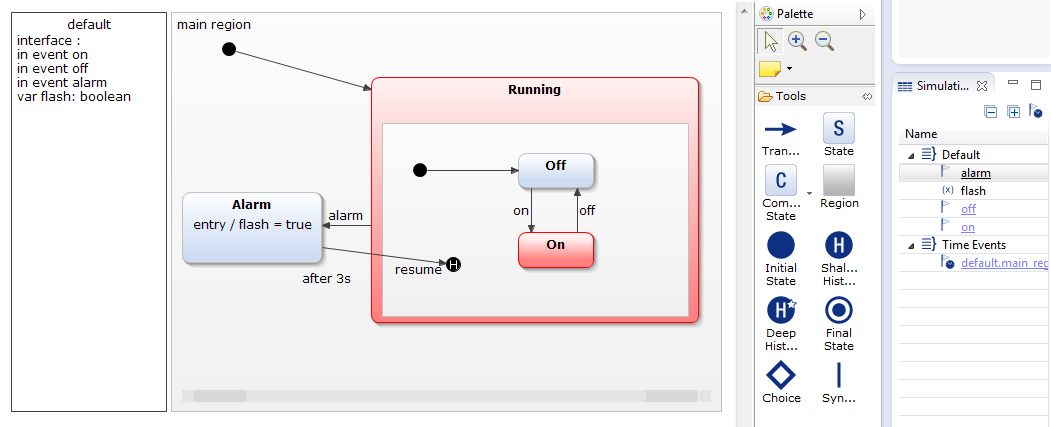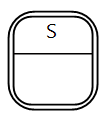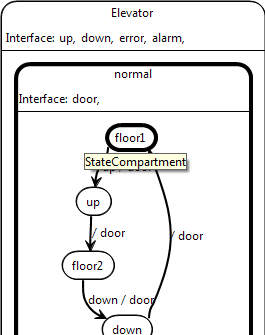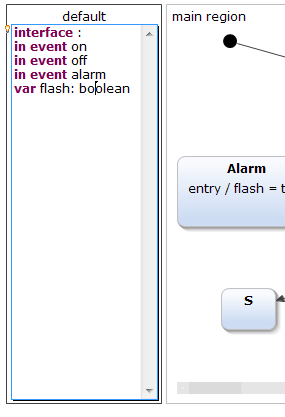
YAKINDU Statechart Tools (SCT) is an open source tool for the specification and development of reactive, event-based systems using state machines (Yakindu SCT User Guide).
YAKINDU SCT consists of a graphical tool for editing and provides validation, simulation, and code generators for different target platforms. The tools are provided as Eclipse-plugins and integrate tightly into the IDE (Yakindu SCT Website).

| KIELER | YAKINDU | ||
|---|---|---|---|
| Transition |  |  | YAKINDU: There is only one type for transitions KIELER: Strong Abort, Week Abort, Normal Termination |
| State |  |  | |
| Composite State |  |  | |
| Initial State |   |  | YAKINDU: Initials State are pseudo states. The Initial State may not be a Composite State. An initial state can only have one outgoing transition and no incoming. KIELER: Initial states are supposed to have a thicker border than normal states |
| Final State |   |  | YAKINDU: Final States are pseudo states. The Final State may not be a Composite State KIELER: Final states are depicted with a double border |
| History |   |  | YAKINDU:
KIELER: A History is a attribute of a Transition |
| Synchronization |  | YAKINDU: Synchronization is a pseudo state. KIELER: Synchronization not needed in KIELER
| |
| Choice |  |  |
| KIELER | YAKINDU | |
|---|---|---|
| Interface declaration |  |  |
Two steps are required to adapt the Yakindu SCT Editor to the SyncCharts syntax:
To adapt the graphical representation, several steps are required:
Examples: